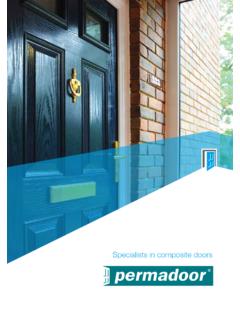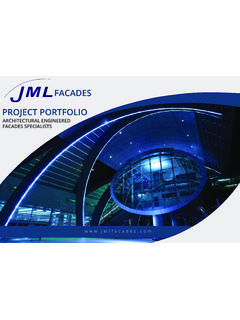Transcription of MISHAP RESPONSE CHECKLIST - Aviation Fire Journal
1 USAF ADVANCED COMPOSITES PROGRAM OFFICE MISHAP RESPONSECHECKLISTFORADVANCED AEROSPACE MATERIALS/COMPOSITESP roject Engineer: Lt John M. Olson21 OCT 93SM-ALC/TIECDSN 633-38105201 Bailey LoopComm: (916) 643-3810 McClellan AFB, CA 95652-2514 FAX: (916) 643-048723 MISHAP RESPONSE CHECKLIST FOR ADVANCED AEROSPACE MATERIALS/COMPOSITESA. Purpose: Provide critical MISHAP RESPONSE procedures for aircraft mishaps involvingadvanced aerospace materials, especially composites in order to minimize the associatedenvironmental, safety, and health Scope: General, rapid- RESPONSE procedures and precautions recommended for personnelinvolved in all phases of a fire, explosion, or high-energy impact damaged composite aircraftmishap RESPONSE , including fire-fighting, investigation, recovery, clean-up, and material Objective.
2 Risk control employing realistic, although conservative, measures to maximizeresponse effectiveness and mission accomplishment, while minimizing the hazard Introduction: The variability in weather, terrain, location, damage extent, types ofaircraft, and risks associated with mishaps make universal risk control procedures , the potentially harmful vapors, gases, composite particulates, and airborne fibersgenerated from a composite aircraft MISHAP , as well the secondary exposures due to handling,clean-up, and disposal necessitate that several standard safety precautions be observed.
3 MISHAP RESPONSE CHECKLISTR equired Equipment: 1. Disaster RESPONSE Force (DRF) Gear PPE Guidelines2. Radiation Monitors3. PPEB urning/SmolderingComposite4. Fixant/Clean-up materials1. SCBA2. Aluminized Proximity SuitsPersonal Protective Equipment (PPE):3. Aluminized gloves1. Coated Tyvek suit with hood and booties 4. No rubber gloves2. SCBA3. Full face respirator (Dual cartridge: HEPAB roken/Splintered Compositesand organic dust/mist)1.
4 Full or half-face respirator4. Leather work glovesw/ dual cartridge (HEPA &5. Nitrile gloves (inner)organic mist) Hard-soled leather work boots (Steel toe 2. Coated, hooded Tyvek suitand shank recommended)3. Leather work gloves (outer)4. Nitrile gloves (inner)Reference Materials:5. Hard-soled work boots1. AFR 355-1 Disaster PreparednessPeripheral Composite Exposure2. AFR 127-4 MISHAP Response1. BDU's: Sleeves Down3. MISHAP Risk Control Guidelines for Advanced2. Non-disposable HEPA filterAerospace Materialsrespirator4. MISHAP RESPONSE Checklist3.
5 Safety glasses w/ sideshields4. Leather work gloves (outer)45. Nitrile gloves (inner)6. Hard-soled work boots5 MISHAP RESPONSE The First-Responder (s) (Fire chief/Bio-Env Engr/Police) shall conduct an initial survey toinspect Signs of fire damaged Presence of loose/airborne fibers and Prevailing weather Degree of site exposed to fire/ Local/proximal equipment/asset damage and Establish control at Evacuate areas in the immediate vicinity of the MISHAP site affected by direct and densefallout from the fire/explosion generated smoke plume, along with easily mobile, criticalequipment.
6 Alter/move aircraft and flight operations exposed to the immediate fallout all unprotected personnel from assembling downwind of the crash Extinguish fire and cool composites to below 300 F. ONLY fire-fighters equipped with Self-Contained Breathing Apparatus (SCBA) are authorized in the immediate vicinity of aburning/smoking MISHAP site until the fire chief declares the area fire safe. If possible, careshould be taken to avoid high-pressure water break-up and dispersal of composite Do NOT use helicopters or low flying aircraft to control/suppress the fire.
7 Noflight/hovering/taxiing within 500 ft AGL of the site and 1000 ft Rope or cordon off the MISHAP site and establish a single entry/exit point. Only sufficientlyprotected individuals are authorized in the immediate MISHAP site and peripheral areas. Theperipheral area is designated by the base bio-environmental engineer and/or the on-scenecommander. As a guide, the peripheral area should be defined as more than 25 feet away fromdamaged composite parts, although it may vary depending upon environmental conditions (rain,dry, high winds, remote site, etc.)
8 If personnel other than those at the accident site have been directly and significantly exposedto adverse material hazards, the medical staff should be consulted for evaluation and tracking. Iftime permits, advise the otherwise un-threatened populace in affected or fallout areas to:-Remain in-doors-Shut external doors and windows-Turn off forced air intakes-Await further Enter the crash site to conduct a more thorough survey after previously coordinating withExplosive Ordinance Disposal (EOD). Identify specific aircraft hazards by inspection, consulting with the crew chief, weaponssystem manager, reference documents, contractor, or aircraft specialists.
9 Note composite andother hazardous materials to MISHAP RESPONSE Advise the on-scene-commander of all findings and Avoid excessive disturbance of the dust by walking, working, or moving at the crash site tominimize airborne particulate fibers and dust. All contaminated footwear should be cleaned tolimit the spread of debris in the area and inside support When exiting the crash site, personnel should use a HEPA filtered vacuum, if available, toremove advanced composite contaminants from their outer clothing, work gloves, boots,headgear, and equipment.
10 If unavailable, efforts shall be made to wipe or brush off as muchcontamination as Clean sites ( tent or trailer) for donning/removal of PPE should be set up as No eating, drinking, or smoking is permitted within 500 feet of the crash site, or asotherwise determined by the on-scene commander. Personnel must be advised to wash hands,forearms, and face prior to eating, drinking, or Non-disposable clothing involved with crash/fire-damaged composite parts should beremoved and laundered according to step Personnel should shower (in cool water) prior togoing off-duty to preclude injury from loose fibers.

